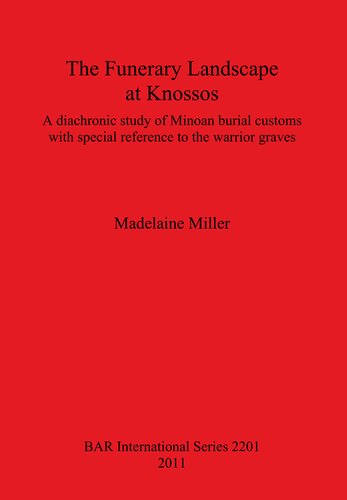

Most ebook files are in PDF format, so you can easily read them using various software such as Foxit Reader or directly on the Google Chrome browser.
Some ebook files are released by publishers in other formats such as .awz, .mobi, .epub, .fb2, etc. You may need to install specific software to read these formats on mobile/PC, such as Calibre.
Please read the tutorial at this link: https://ebookbell.com/faq
We offer FREE conversion to the popular formats you request; however, this may take some time. Therefore, right after payment, please email us, and we will try to provide the service as quickly as possible.
For some exceptional file formats or broken links (if any), please refrain from opening any disputes. Instead, email us first, and we will try to assist within a maximum of 6 hours.
EbookBell Team

4.7
66 reviewsDuring the last century's archaeological investigations of the advanced Bronze Age culture maintained by the so-called Minoans on the island of Crete, a number of tombs dated to the Late Minoan period and containing weapons have been discovered in the surroundings of the site of Knossos. The tombs are not confined to a certain area or cemetery, but are rather dispersed around the Palace and town. Although they are characterised by their weapons, other artefacts – such as bronze vessels and certain pottery types – also distinguish these tombs. The tombs are of three types: chamber tombs with long dromoi, shaft graves and pit-caves. Various labels have been designated for them: tombs with weapons, warrior tombs, warrior graves and weapon-tombs. The warrior graves are often discussed in relation to the question of when the Mycenaeans arrived in Crete. Most scholars agree that a Mycenaean presence or power in Crete existed in the Late Bronze Age, but when their arrival would have taken place has not yet enjoyed consensus. Previous scholarship raises a number of questions that are dealt with in this work in relation to the funerary landscape at Knossos, including: to what degree do the burial customs in fact change in LM II, and what about the mainland influences? If the archaeological material points in that direction, how are we to understand such a transformation of the mortuary practices? Would this indicate an ethnic change? If, on the other hand, the material points towards a gradual process beginning already in LM I or earlier, with elements of mainland traits, what would that indicate? The tombs, shaft graves and pit-caves of Knossos are re-examined in an attempt to put answers to these intriguing questions.